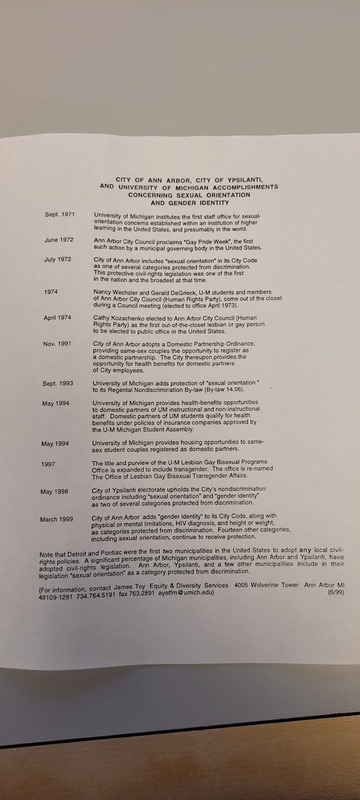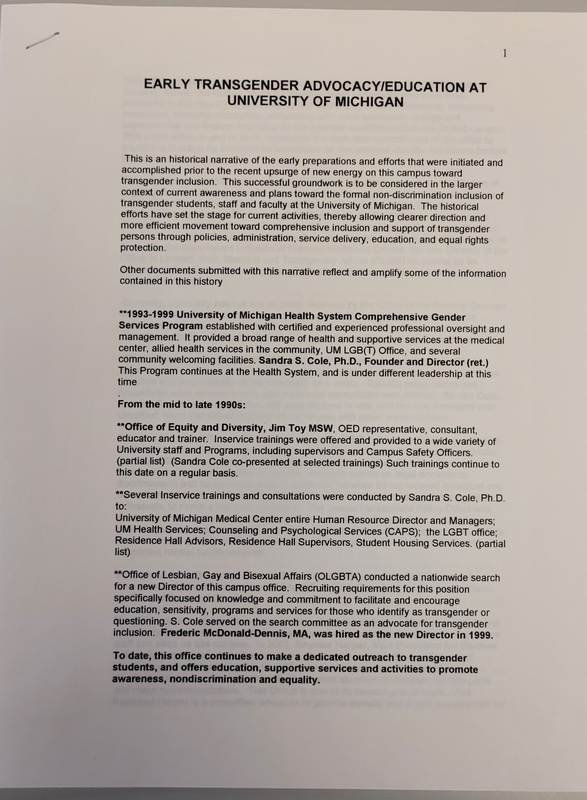Inclusion within the University Community
Even within the greater queer community, transgender identities have not always been included. When the University of Michigan's Spectrum Center (as it is known now) was created in 1971, it was the first office of its kind in the U.S. However, the office did not formally include transgender people in its title until 1997, 26 years later. Though broad transgender acceptance was slow to arrive, the university hosted researchers and activists who did care about transgender issues. Though early incidents are harder to categorize because of the danger of visibility, conflation of transgender identity with homosexuality, and gray areas in now-outdated terminology such as "transvestites," progress in transgender inclusion can still be seen in campus records.
One of the most notable signs of transgender inclusion at the University of Michigan is the creation of the University's Comprehensive Gender Services Program. Through the University's Medical Center, the Comprehensive Gender Services Program ensures trans people have access to inclusive health care. This document, a 1995 draft of the Prospectus and Standards of Care, shows evidence that members of the university community recognized the need for transgender support resources on a local and national level.




